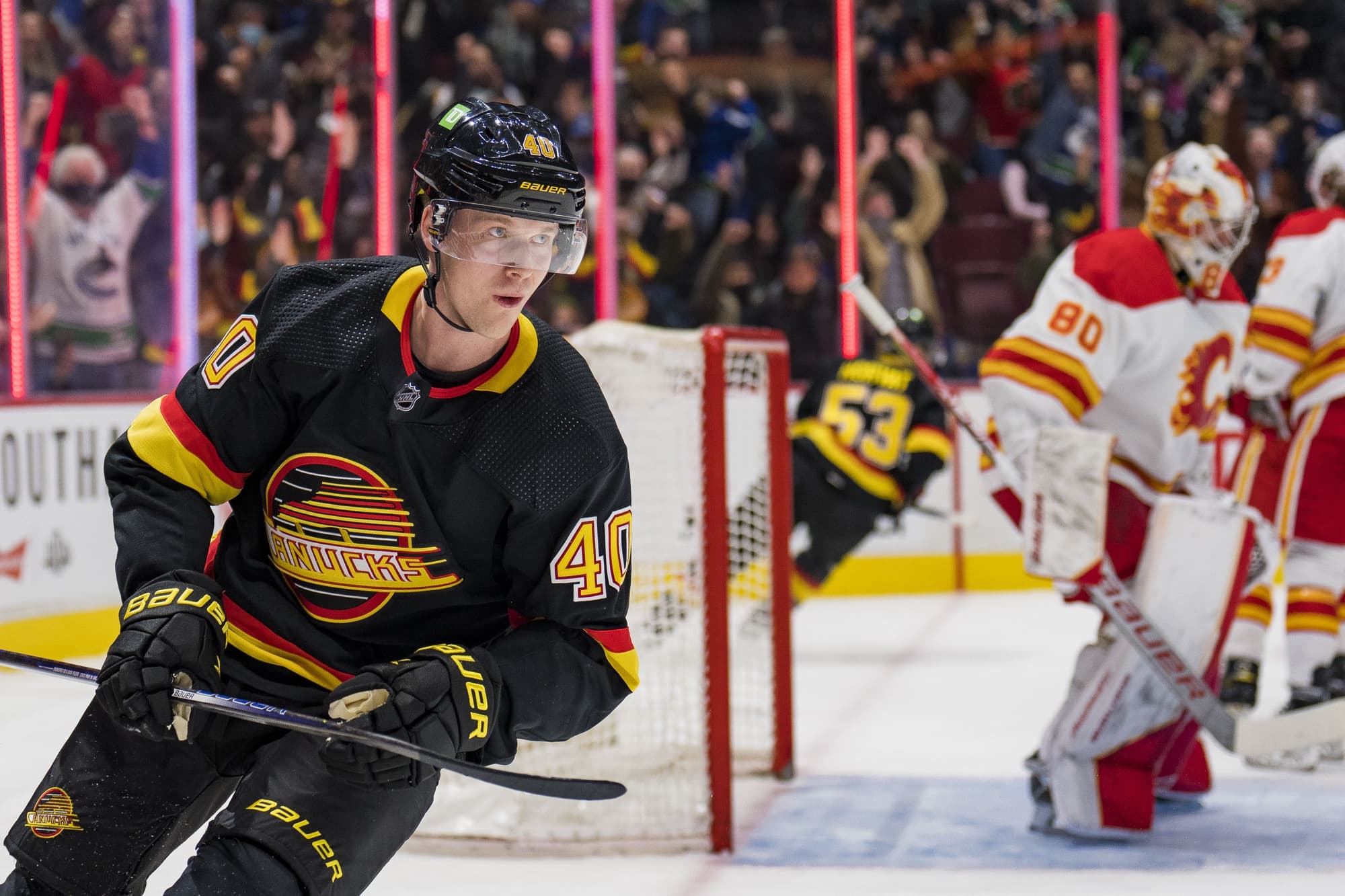Nation Sites
The Nation Network
CanucksArmy has no direct affiliation to the Vancouver Canucks, Canucks Sports & Entertainment, NHL, or NHLPA
Pearson, Boudreau, and CanucksArmy tell you how to know when Elias Pettersson is really on his game

Photo credit: © Bob Frid-USA TODAY Sports
Mar 10, 2022, 18:49 ESTUpdated: Mar 10, 2022, 18:48 EST
Some fans and media alike jumped the gun a bit this year when they proclaimed Elias Pettersson was “back” after a couple flashes of success.
After missing a big chunk of last season with a freak wrist injury, Pettersson looked like a shell of his former self and was essentially ineffective for the first half of the season.
Even after Travis Green had been let go and many of his teammates experienced the “Boudreau bump”, Pettersson’s immediate improvement after the coaching change was marginal at best.
But now, it’s safe to say that Elias Pettersson is back.
Now, he himself will even tell you as much.
“I feel great, I think I’m creating a lot,” Pettersson said last month. “I feel like myself out there. Playing is fun. I’m playing with confidence.”
But other than points, what do you see when Pettersson is “on” his game?
“He’s really skating, like I thought last night he skated a lot better,” said Bruce Boudreau of Pettersson’s performance Wednesday night against the Montreal Canadiens. “He did so many things not standing still, and when he’s skating, he’s creating.”
“He’s one of the few guys that can stickhandle so well while he’s going in full motion — that’s something not everybody can do, and sometimes he gets trapped into doing that standing still. So if he can do it while he’s skating, he’s a much better player.”
According to the Canucks’ head coach, it’s doing something not many others can do — stickhandling and creating plays while moving at a high speed.
Kind of like this:
But that’s just one person’s theory, and there are plenty of others to go around.
Fans and teammates of Pettersson’s notice a multitude of different things — aside from putting up points, obviously — that indicate Pettersson is on his game.
Of course, when he’s on, the points are sure to quickly follow.
“Obviously Petey is a heck of a player,” Tanner Pearson told CanucksArmy. “You see it when he’s winning puck battles, skating, protecting the puck — you see him when he’s on his game, he always does that reverse hit. When he’s engaged like that, you know he’s in it, and he’s definitely been a heck of a player lately.”
But there’s even more things to look for, and we’d like to draw your attention to it.
Sure, it may technically fall under the category of “keeping his feet moving” — or as the kids call it — “skating”, but it’s still a statistic that’s tracked nonetheless, and Pettersson historically ranks pretty high in it.
Penalties drawn.
There was a legitimate case for Pettersson to pick up Hart Trophy votes in the 2019-20 season — albeit fifth and fourth place votes — and part of the reason was Pettersson’s penalty differential and subsequent power play effectiveness.
Pettersson doesn’t take many penalties, and draws a ton, especially when he’s moving his feet.
A lot of the penalties Pettersson draws are considered “must-takes” because they usually come as the result of him shimmying his way past an opponent and into a dangerous area of the ice.
This was especially apparent in the 2020 bubble playoffs, where Pettersson drew 13 penalties and took just one. That, among other things, indicated Pettersson was on his game, and with seven goals and 11 assists through 16 playoff games in that span, the point total certainly suggests that that was indeed the case.
Lately, Pettersson has been doing all of these things. This season, he’s taken just three penalties and drawn 20 — seven of which have come in his last 11 games.
Additionally, Pettersson has drawn a penalty in each of his last three games, and has tallied 17 points on the power play this season.
At the start of the season, Pettersson wasn’t drawing penalties with the same frequency, mostly because opponents were able to take the puck away from him with ease.
When he’s playing like the puck possession machine that he is and, as Boudreau said, making plays at high speeds that most simply cannot do — opponents are left with no choice but to commit an infraction against him in order to stop him from scoring.
To summarize, you should look for Pettersson being physically engaged by throwing reverse hits and winning puck battles, moving his feet and making plays at inhuman speeds, and of course, putting the Canucks on the power play.
Oh, and scoring goals like this once his team is on the power play is a fairly obvious indication, too:
Breaking News
- The Stanchies: Canucks reach crossroads after 3-2 loss to Lyon-hearted Sabres
- Friedman: ‘Talks are underway’ for the Canucks on a Quinn Hughes trade
- Instant Reaction: Sabres 3, Canucks 2
- Friedman: Brock Boeser expected to play for Canucks against Sabres following appendix issue
- Canucks assign goaltender Nikita Tolopilo to AHL Abbotsford
